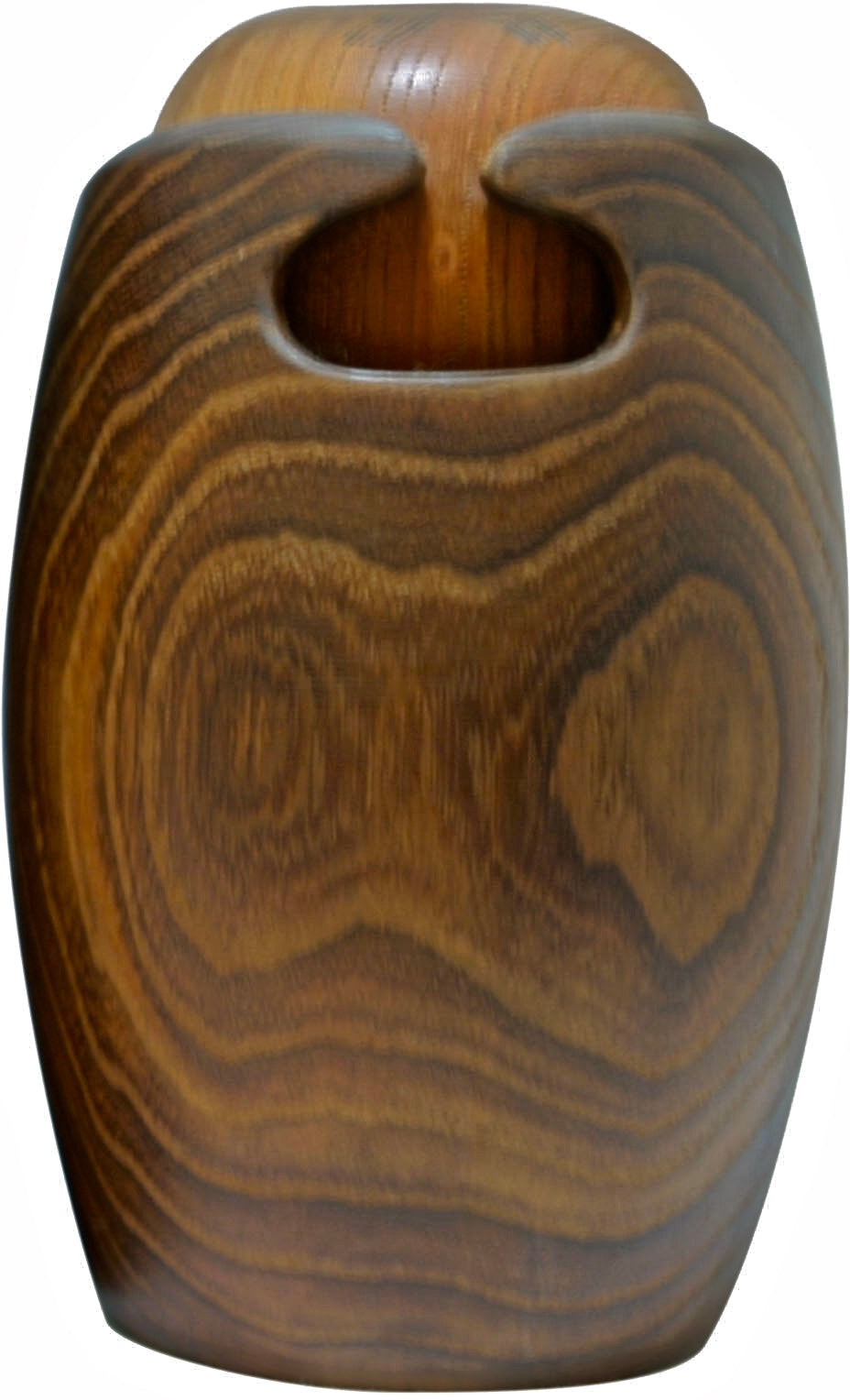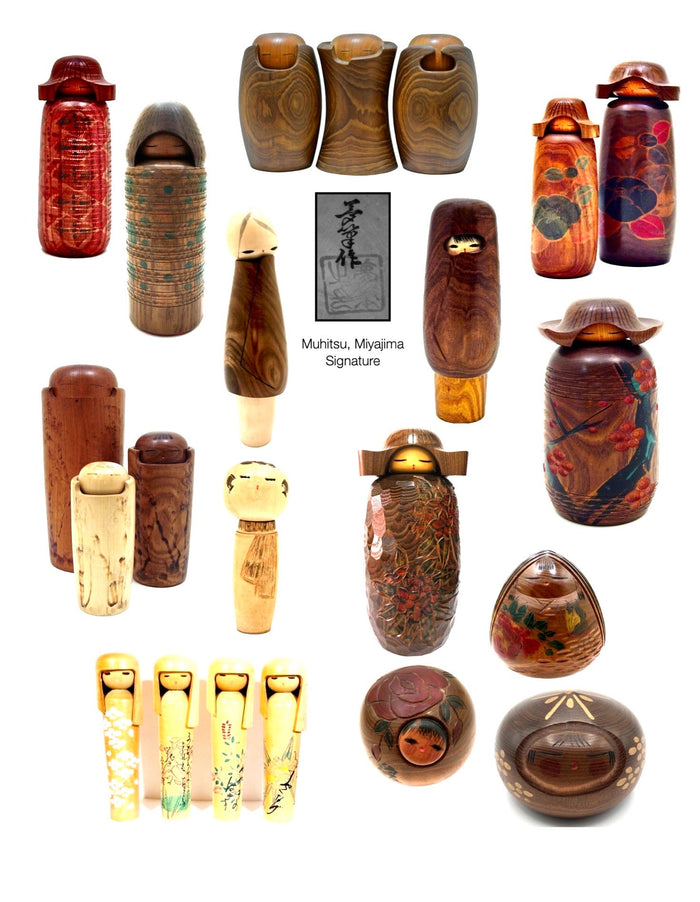




Vintage Sosaku Kokeshi entitled: “San'en no byōsha | Three Wise Monkeys” by Miyajima, Muhitsu
Dimensions: 6-0"h (each doll)
Japanese Buddhist monks in China brought the proverb, “mizaru, kikazaruin, iwazaru” to Japan, which led to the association of the saying of the ‘three wise monkeys’, which were often represented in Buddhist sculptures. They are said to be companions of the folk deity, Shōmen-Kongō. The proverb means ‘hear not, say not, see not’. The “Three Wise Monkeys,” were additionally depicted throughout Japanese temple architecture, representing the Confucius principle of the ‘things that one has done wrong in the last 59 days’, encouraging the citizenry not to experience the bad deeds of others.
Shown is a very rare set of three wooden, abstract representations of “Maiko”, (woman of dance), dressed in beautifully- formed wooden Kimono. These were made specifically to fit together as a set, to complement the historic saying known in many countries. Miyajima-san, in this case, preferred to work in heavy, dark Enju wood, (Pagoda Tree), because of the rich colors and expressive grain. Each doll is crafted to make it appear as if the exterior clothing is a separate element from the body with its expressive face. Each doll is individually signed.
Vintage Condition: Pristine, excellent condition affording the doll age-old elegance. Retains the original craft/workmanship showing a wonderfully-developed patina commensurate with age and unrestored. The piece meets all the standards of Sosaku Kokeshi collectibles.

Artisan
Woodworker: Miyajima, Muhitsu
1929-
Biographical History:
Muhitsu began making Kokeshi in 1942, under the apprenticeship of Kichitaro Kobayashi, a maker of traditional-style Kokeshi, and devoted himself exclusively to making Sosaku Kokeshi in 1949. Since 1965, Muhitsu has produced many award-winning dolls. Miyajima-san. His dolls have had a great influence on creative, (Sosaku) doll makers since then. A multiple award winner, Miyajima-san won the prestigious Prime Minister’s Award in 1973. No further information has been published on this artist.
Collector's note – descriptive qualities, standard characteristics & ornamentation styles:
Simple form and function is the theme to Miyajima-san’s creations. The wood is most critical in his interpretation of the seasons and often incorporates the snow coat called ‘Mino”, which adds depth and character to his pieces. The wearing of the traditional Fuyu Kasa, (hat), of the 1950s is seen on many of his works and was a kind of headcovering for Buddhists, which was overly large, in a bowl or mushroom shape, and was originally made from woven rice straw. Seasonal flowers, (Camellia), are often used along with Plum blossoms and tree branches, (see the two dolls at the top right named "Bairin or Plum Grove"). He typically incorporates sumi-e’ brush work into his representation of faces, and uneven carved grooving giving ornamentation and texture to the figure. Miyajima-san works in a variety of beautiful woods, but seems to prefer the heavy, dark colored Enju wood, (Pagoda tree), for it’s rich colors and interesting grain.
Explore & Learn More about Woodworker: Miyajima, Muhitsu